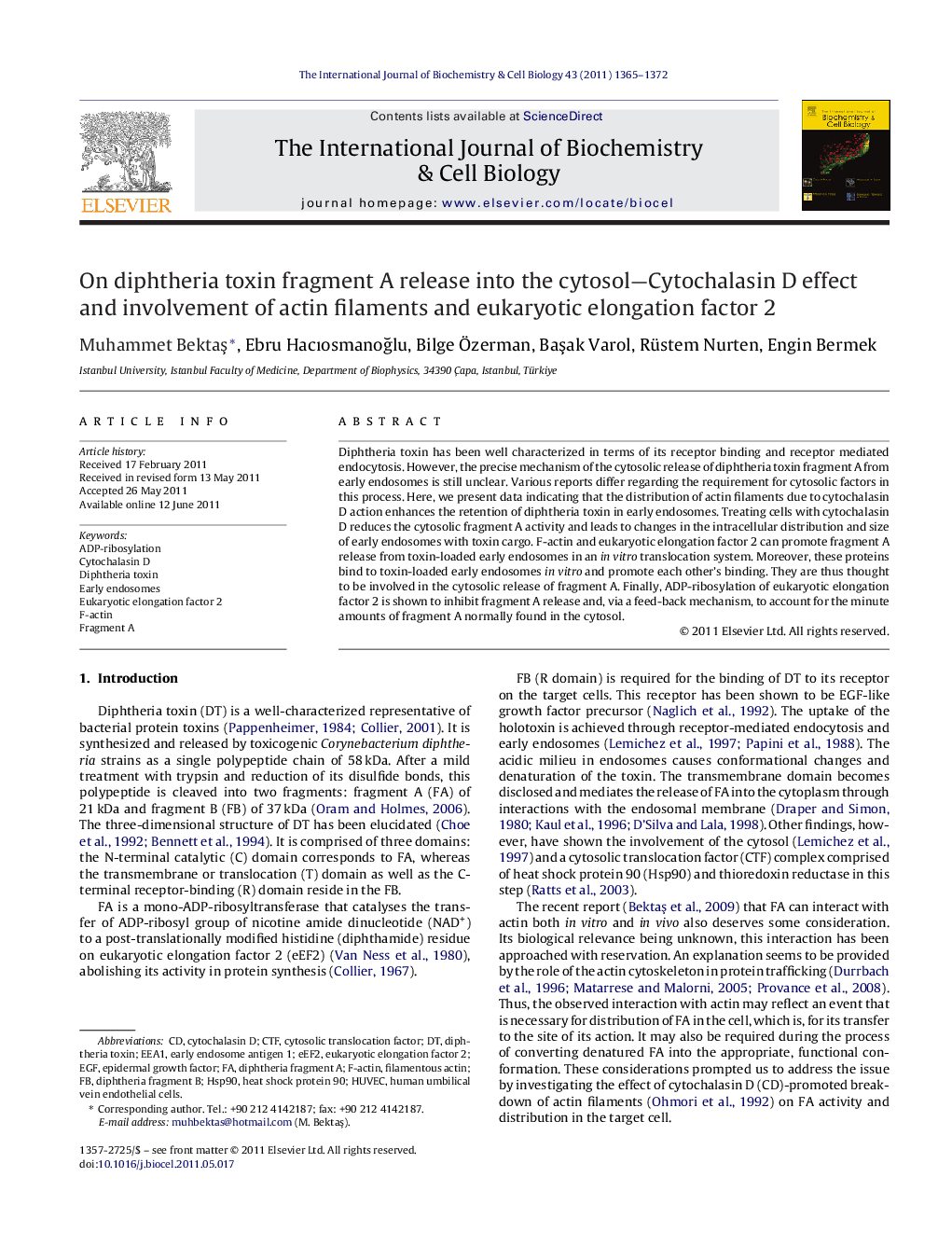| Article ID | Journal | Published Year | Pages | File Type |
|---|---|---|---|---|
| 1983646 | The International Journal of Biochemistry & Cell Biology | 2011 | 8 Pages |
Diphtheria toxin has been well characterized in terms of its receptor binding and receptor mediated endocytosis. However, the precise mechanism of the cytosolic release of diphtheria toxin fragment A from early endosomes is still unclear. Various reports differ regarding the requirement for cytosolic factors in this process. Here, we present data indicating that the distribution of actin filaments due to cytochalasin D action enhances the retention of diphtheria toxin in early endosomes. Treating cells with cytochalasin D reduces the cytosolic fragment A activity and leads to changes in the intracellular distribution and size of early endosomes with toxin cargo. F-actin and eukaryotic elongation factor 2 can promote fragment A release from toxin-loaded early endosomes in an in vitro translocation system. Moreover, these proteins bind to toxin-loaded early endosomes in vitro and promote each other's binding. They are thus thought to be involved in the cytosolic release of fragment A. Finally, ADP-ribosylation of eukaryotic elongation factor 2 is shown to inhibit fragment A release and, via a feed-back mechanism, to account for the minute amounts of fragment A normally found in the cytosol.
